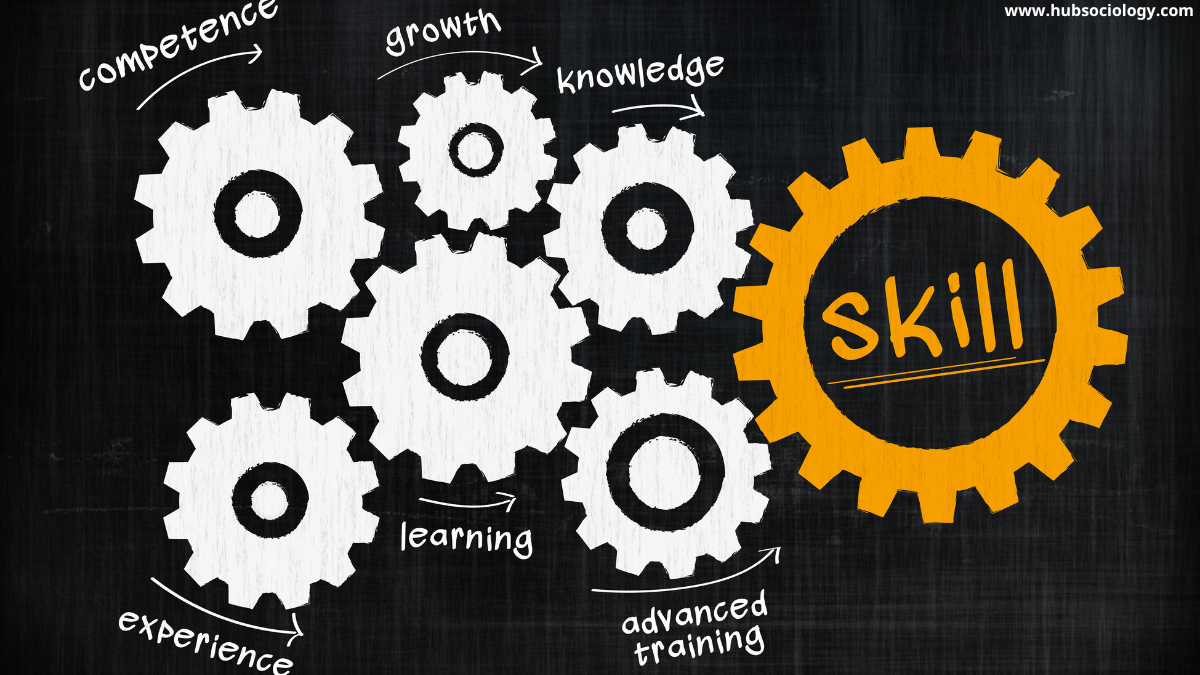Introduction
India, with its demographic dividend, has one of the largest youth populations in the world. Over 65% of its population is below the age of 35, presenting a significant opportunity for economic growth and social transformation. However, the challenge lies in harnessing this potential through effective skill development and employment generation. From a sociological perspective, skill development and youth employment are not just economic issues but are deeply intertwined with social structures, education systems, caste and class dynamics, and globalization. This article examines the interplay between skill development and youth employment in India, analyzing the structural barriers, policy interventions, and societal implications.

The Demographic Dividend and the Employment Challenge
India’s demographic dividend—a large working-age population—can be a boon only if the youth are productively employed. However, unemployment and underemployment remain pressing concerns. According to the Periodic Labour Force Survey (PLFS) 2022-23, the unemployment rate among youth (15-29 years) in urban areas was significantly high, with educated youth facing greater joblessness.
Sociologically, this situation can be attributed to:
- Mismatch Between Education and Employment – The Indian education system largely emphasizes theoretical knowledge rather than vocational or skill-based training. As a result, many graduates lack employable skills.
- Social Inequalities – Caste, class, and gender disparities restrict access to quality education and skill development programs. Marginalized groups often face systemic exclusion from formal employment opportunities.
- Informalization of Labor – A large proportion of youth work in the informal sector with low wages, job insecurity, and no social security benefits.
Skill Development Initiatives in India: A Sociological Critique
The Indian government has launched several skill development programs, such as:
- Pradhan Mantri Kaushal Vikas Yojana (PMKVY)
- National Skill Development Corporation (NSDC)
- Skill India Mission
While these initiatives aim to bridge the skill gap, their effectiveness is limited by structural and social factors:

1. Caste and Class Barriers
- Access to Training Programs: Youth from lower castes and economically weaker sections often lack awareness or resources to enroll in skill development courses.
- Discrimination in Job Placements: Even after acquiring skills, Dalits, Adivasis, and Muslims face discrimination in hiring processes, limiting their employment opportunities.
2. Gender Disparities
- Women’s participation in skill training remains low due to societal norms restricting their mobility and employment choices.
- Traditional gender roles push women towards low-paying, informal jobs like tailoring or handicrafts, while technical and high-paying sectors remain male-dominated.
3. Rural-Urban Divide
- Rural youth have limited access to quality skill training centers, which are mostly urban-centric.
- Agriculture, which employs a large rural workforce, is increasingly becoming unviable, pushing youth towards low-skilled urban jobs.
4. Quality and Relevance of Training
- Many skill programs focus on short-term courses that do not align with industry demands.
- There is a lack of apprenticeship and on-the-job training, which are crucial for practical skill acquisition.
Youth Employment: Structural and Sociological Constraints
1. The Crisis of Educated Unemployment
- India produces millions of graduates every year, but many remain unemployed due to a lack of industry-relevant skills.
- Societal pressure to pursue traditional degrees (like B.A., B.Com) rather than vocational courses leads to an oversupply of unskilled graduates.
2. The Gig Economy and Precarious Work
- The rise of platform-based jobs (e.g., Swiggy, Zomato, Ola) has created employment but with no job security or benefits.
- Youth are increasingly engaged in freelance or contractual work, which lacks stability and social protection.
3. Social Capital and Networks
- Employment opportunities in India are often accessed through social networks rather than merit alone.
- Upper-caste and middle-class youth benefit from familial and professional networks, while marginalized groups struggle to break into formal sectors.
4. Globalization and Changing Labor Markets
- Automation and artificial intelligence are reducing demand for low-skilled jobs.
- Multinational companies prefer highly skilled workers, leaving semi-skilled youth in precarious employment conditions.
Policy Interventions and the Way Forward
To address these challenges, a multi-dimensional approach is needed:
1. Inclusive Skill Development Programs
- Skill initiatives must actively include marginalized communities through targeted schemes.
- Mobile training units and digital skilling platforms can improve rural access.
2. Strengthening Vocational Education
- Introducing vocational training at the school level can shift societal perceptions about skill-based education.
- Collaboration between industries and training institutes can ensure curriculum relevance.
3. Affirmative Action in Private Sector Hiring
- Policies like reservation in private sector jobs for SC/ST/OBC communities can reduce employment disparities.
- Incentivizing companies to hire from marginalized groups can promote inclusive growth.
4. Promoting Entrepreneurship
- Encouraging youth entrepreneurship through funding and mentorship can reduce dependency on traditional employment.
- Self-help groups (SHGs) and micro-enterprises can empower rural and women entrepreneurs.
5. Social Security for Informal Workers
- Extending labor protections to gig workers and informal sector employees can provide stability.
- Universal basic income or employment guarantee schemes for urban youth can be explored.
Conclusion
Skill development and youth employment in India are not just economic concerns but are deeply rooted in sociological structures. Caste, class, gender, and regional disparities shape access to opportunities, while globalization and technological changes redefine labor markets. Effective policy interventions must go beyond training programs to address systemic inequalities. By fostering inclusive growth, India can truly leverage its demographic dividend for sustainable development. The future of India’s youth depends on bridging the gap between skill acquisition and dignified employment, ensuring that no section of society is left behind in the journey towards progress.

Do you like this this Article ? You Can follow as on :-
Facebook – https://www.facebook.com/hubsociology
Whatsapp Channel – https://whatsapp.com/channel/0029Vb6D8vGKWEKpJpu5QP0O
Gmail – hubsociology@gmail.com
Topic Related Questions
5-Mark Questions (Short Answer Type)
- Define skill development and explain its importance for youth employment in India.
- What are the major challenges faced by Indian youth in acquiring employable skills?
- How does the caste system affect access to skill development programs in India?
- Briefly explain the role of the Pradhan Mantri Kaushal Vikas Yojana (PMKVY) in skill development.
- Why is there a mismatch between education and employment opportunities in India?
- How does gender inequality impact women’s participation in skill development programs?
- What is the significance of vocational education in reducing youth unemployment?
- How does the informal sector contribute to youth employment in India?
- Explain the concept of “demographic dividend” and its relation to youth employment.
- What are the limitations of current skill development initiatives in India?
10-Mark Questions (Detailed Answer Type)
- Discuss the sociological barriers to skill development among marginalized communities in India.
- Analyze the impact of globalization on youth employment opportunities in India.
- Evaluate the effectiveness of government skill development programs like Skill India and NSDC.
- How does the rural-urban divide affect skill acquisition and employment among Indian youth?
- Examine the role of the gig economy in shaping youth employment trends in India.
- Discuss the relationship between education, skill development, and employability in India.
- Why is educated unemployment a growing concern in India? Suggest possible solutions.
- How do social networks and capital influence job opportunities for Indian youth?
- Critically assess the role of private sector participation in skill development initiatives.
- What are the challenges faced by women in accessing skill training and employment in India?
15-Mark Questions (Essay-Type/Long Answer)
- “Skill development is crucial for harnessing India’s demographic dividend.” Discuss this statement in the context of youth employment challenges.
- Examine the socio-economic factors contributing to youth unemployment in India. Suggest policy measures to address the issue.
- How do caste, class, and gender inequalities impact skill development and employment opportunities in India?
- Critically analyze the role of government and private sector in bridging the skill gap among Indian youth.
- Discuss the changing nature of work in India due to automation and globalization. How can skill development programs adapt to these changes?
- “The informal sector absorbs a large portion of India’s workforce but offers little job security.” Elaborate on this statement with reference to youth employment.
- Evaluate the success and limitations of vocational education in India as a tool for reducing unemployment.
- How can entrepreneurship be promoted among Indian youth as an alternative to traditional employment? Discuss with examples.
- What reforms are needed in India’s education system to align it with industry requirements for better employability?
- Discuss the impact of digitalization and emerging technologies on skill development and job creation for Indian youth.
